A selection of entry-level, medium, and progressive configurations, according to your gaming budget.
Introduction
If you need to update your home computer right now or buy a new one without waiting for New Year’s discounts, I have prepared several configurations for any wallet.
Here are the conditions I set for myself when selecting components:
- Better performance/money spent: why pay more when you can spend that money on something else?
- Components matched for a gaming PC. Not office, not for video editing, not for scientific research and other things. Thus, I immediately want to filter out comments in the style: why didn’t the author suggest raid-0 of 4x SSD for my game library?!?!11
- The main peripherals (monitor, keyboard, mouse and processor cooler) are a separate item and are not included in the main assemblies – it is very difficult to advise a specific model that will suit absolutely everyone. Moreover, I will not advise such “intimate” things as headphones or speakers.
- By prices: I look at the real ones on the aggregator here with the transfer to $ in order to avoid the influence of exchange rate fluctuations. Also, I can’t foresee the price situation/availability of components in any particular region.
- The purchase cannot be postponed and PCs/components are needed here and now – waiters who advise waiting for support for DDR100500 / PCI-Express 999 /<job technology name> or buying a console/bicycle /iPhone /boat instead of a PC – please do not disturb.
- Preference for specific brands – since (the author was not entered) this is not an advertising article, then there are no preferences.
What is a gaming PC, in my understanding? This is a computer that, for its money, should pull modern games with a given resolution/frame rate. In each category, I choose from three main permissions:
- Full-HD (1080p): 1920×1080
- Quad-HD (1440p): 2560×1440
- Ultra-HD (2160p): 3840×2160
and two main screen refresh rates:
- 60 Hz
- 144 Hz
As you can see, I do not plan to consider non-standard resolutions such as WUXGA (1920×1200), WQXGA (2560×1600) or 180-, 240-, or 300-Hz monitors.
Of course, it is not always possible to squeeze out stable 60/144 Hz in all games – especially those that will be released in six months or a year or two. And here the problem is not only in hardware but also in software – how well the manufacturer adapts its drivers and how well game developers optimize their creations on the day of release / after several patches.
Another moment to take the pressure off a recent topic. Some components play a much larger role in the stable operation of a PC than they really seem. One of these is a PSU (power supply unit), which can work properly for many years and survive more than one upgrade. I will not describe in detail which PSU is better in its price category, and this is impossible without mentioning specific brands.
Therefore, the advice is the following – look for the presence of an 80+ certificate (Bronze/Silver/Gold/Platinum) – even the minimum Bronze in most cases is enough to buy a good model. If it’s already very difficult, you can use a hint from knowledgeable people – the best models go at the beginning of the list, then a little worse and further in descending order.
Okay, now let’s start assembling.
Budget gaming PC – 1080p@60fps
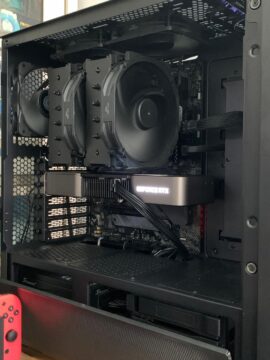
Build goal: to gain access to the world of computer games for minimal money. With the ability to inexpensively upgrade the system in the (not) distant future.
System unit:
1. Processor: AMD Ryzen 5 3500 – $140 | Intel Core i3-10100 – $100
2. Mat. Board: AMD B450 – $60 | H410M – $65
3. RAM: DDR4 2×8 Gb 3200 MHz – $140
4. Disk (system): SSD 1 Tb – $110
5. Disk (games): none
6. Video card: GTX 1660 – $230 | 5500 XT – $230
7. Power supply: 500-600 W – $50
8. Chassis: regular – $50
Total cost: $745-780
Peripherals:
– Monitor: 27″ 1080p 60 Hz – $130 | 27″ 1080p 144 Hz – $215
– Mouse: regular wired – $15
– Keyboard: regular wired – $15
– CPU cooler: regular – $15
Total cost: $175-260
In a nutshell:
- For the initial assembly, we take one of the best state employees from AMD. There are no good blue alternatives in the camp yet, so the chosen i3-10100 allows you to save $40-50 and buy a better video card.
- The price of the B550 chipset is too high to recommend it instead of the B450.
- 16GB of RAM is now the bare minimum for most games, and the cost difference between 3200Hz and below 3200Hz memory is negligible and not worth saving in the long run.
- Only one SSD drive for games and OS, to save money. As a last resort, you can take a smaller SSD for the OS and a larger HDD purely for games – but I would not recommend it.
- An 80+ Bronze/Silver-certified power supply will easily handle your current configuration and even a higher-class graphics card if you upgrade in the future.
- The case — having screened out not quite high-quality goods, the minimum level starts at $50.
- Video cards of this class give out a stable 60 fps in most games and even a little more in the most popular ones. Both options show +/- the same number of fps and are in the same price category – so the choice here is purely “political”. Note: For an extra $40-60, you can get a GTX 1660 SUPER and get about 15% more performance.
- Even an inexpensive 144 Hz monitor is almost 2 times more expensive than the same one but with 60 Hz. If you plan to play in the mainstream (CS: GO, Dota 2, Rocket League, etc.), it makes sense to pay extra and take a 144 Hz model with a reserve for the future.
Optimal Gaming PC – 1440p@60fps
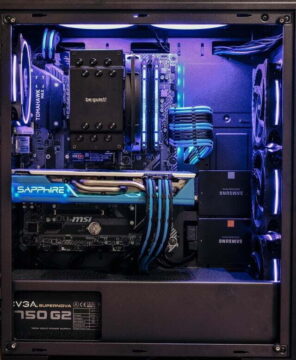
Build goal: Play in Quad-HD (1440p) resolution at a stable 60 fps.
System unit:
1. Processor: AMD Ryzen 5 3600 – $200 | Intel Core i5-10400 – $170
2. Mat. Board: AMD B450 – $60 | H410M – $65
3. RAM: DDR4 2×8 Gb 3200 MHz – $140
4. Disk (system): SSD 1 Tb – $110
5. Disk (games): SSD 1 Tb – $110
6. Video card: RTX 2060 Super 8 Gb – $450 | Radeon RX 5700XT – $450
7. PSU: 600 W 80+ Bronze/Silver – $80
8. Chassis: regular – $80
Total cost: $1200-1230
Peripherals:
– Monitor: 32″ 1440p 60+ Hz – $220
– Mouse: regular wired – $30
– Keyboard: regular wired – $30
– CPU cooler: regular – $30
Total cost: $310
In a nutshell:
- The AMD Ryzen 5 3600 can be picked up right now for $200 on an old chipset, leaving more money for a graphics card, monitor, and/or other peripherals.
- Plus one 1TB SSD for the rest of the game library. Alternatively, if you need more space or purely for movies/media, you can take a 2 TB HDD for the same money.
- Video card with 8 GB of memory for a resolution of 1440p.
- An 80+ Bronze and/or Silver-certified 600W PSU will suffice.
- A pure 1440p 60Hz monitor is hard to find these days – manufacturers usually offer 75Hz or more. You can, of course, take a smaller diagonal, but from personal experience with a resolution of 1440p, you should not take less than 30″.
- A slightly more expensive mouse, keyboard and CPU cooler for a comfortable game.
Optimal Gaming PC – 1440p@144fps
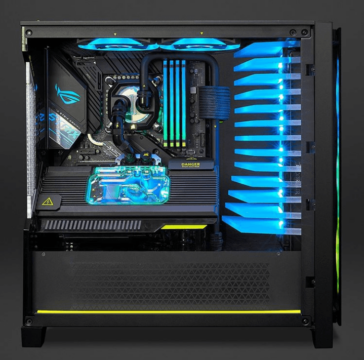
Build goal: Play at Quad-HD (1440p) resolution and 144 fps in as many games as possible.
System unit:
1. Processor: AMD Ryzen 5 3600 – $200 | Intel Core i5-10400 – $170
2. Mat. Board: AMD B450 – $60 | H410M – $65
3. RAM: DDR4 2×8 Gb 3200 MHz – $140
4. Disk (system): SSD 1 Tb – $110
5. Disk (games): SSD 1 Tb – $110
6. Video card: RTX 2070 Super 8 Gb – $600
7 Power supply: 600 W 80+ Bronze/Silver – $80
8. Chassis: regular – $80
Total cost: $1350-1380
Peripherals:
– Monitor: 32″ 1440p 144 Hz – $320
– Mouse: regular wired – $30
– Keyboard: regular wired – $30
– CPU cooler: regular – $30
Total cost: $410
In a nutshell:
- When the RTX 3060/3070 will be released, it’s more or less clear, but when it starts to be sold, and when the price matches the recommended one, I won’t guess at all. Therefore, I settled on the RTX 2070 Super, available here and now. To save money, you can consider a used option.
- In order not to inflate the budget too much, the video card in this assembly is “only” $150 more expensive. This was done for balance, taking into account the cost of the monitor which has grown by $100.
- Actually, a monitor with a diagonal of 30 “-33” and support for 144 Hz is another $ 100 more expensive. Be prepared to pay a “premium” cost for having G-Sync support. If you don’t want to pay extra for the “greens”, you can take the 5700XT from the red camp and a monitor with Free-Sync, but you still can’t see a stable 144 Hz in all games.
Top gaming PC – 2160p@60fps
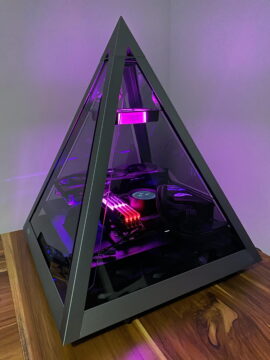
Build goal: Play in Ultra-HD (2160p) resolution at a stable 60 fps.
System unit:
1. Processor: AMD Ryzen 7 3800X – $300 | Intel Core i7-10700 – $320
2. Mat. Board: AMD X570 – $170 | Intel Z490 – $170
3. RAM: DDR4 2×16 Gb | 4×8 Gb 3200 MHz – $250
4. Disk (system): SSD 1 Tb – $110
5. Disk (games): SSD 1 Tb – $110
6. Video card: RTX 3080 10 Gb – $1000
7. Power supply: 800 W 80+ Gold /Platinum – $170
8. Case: Uncommon – $150
Total cost: $2260-2280
Peripherals:
– Monitor: 32″ 2160p 60 Hz – $400
– Mouse: wired gaming – $50
– Keyboard: wired gaming – $50
– CPU cooler: Fancy – $50
Total cost: $550
In a nutshell:
- There is practically no difference between the Ryzen 3700X/3800X/3900X in games. Because the cost of 3800X does not differ from 3700X, the choice fell on this model.
- 32 GB of RAM with a margin for the future.
- From the offers of the aggregator, the price of the RTX 3080 is now far from the recommended cost (about $300 higher), but there is no point in investing in the RTX 2080 either. First, we won’t see a stable 60 fps on the previous generation card. No wonder the RTX 3080 is called the world’s first card with “honest” 4k / 60fps. Secondly, even with an overpayment of 30% (!) in terms of performance per $, RTX 3080 > RTX 2080.
- Because prices for 144 Hz monitors with 4k support are still exorbitant, and video cards providing such a number of frames per second do not yet exist, this time I will focus on 60 Hz models.
Conclusion
Despite the variety of components, choosing a PC for games is not such a difficult task. Everyone can assemble a system unit, since this process has been noticeably simplified in recent years. I hope this material will serve as a starting point for choosing components for your budget and tasks.
In the end, I would like to arrange a small survey in order to better understand the interest of the audience in such publications.
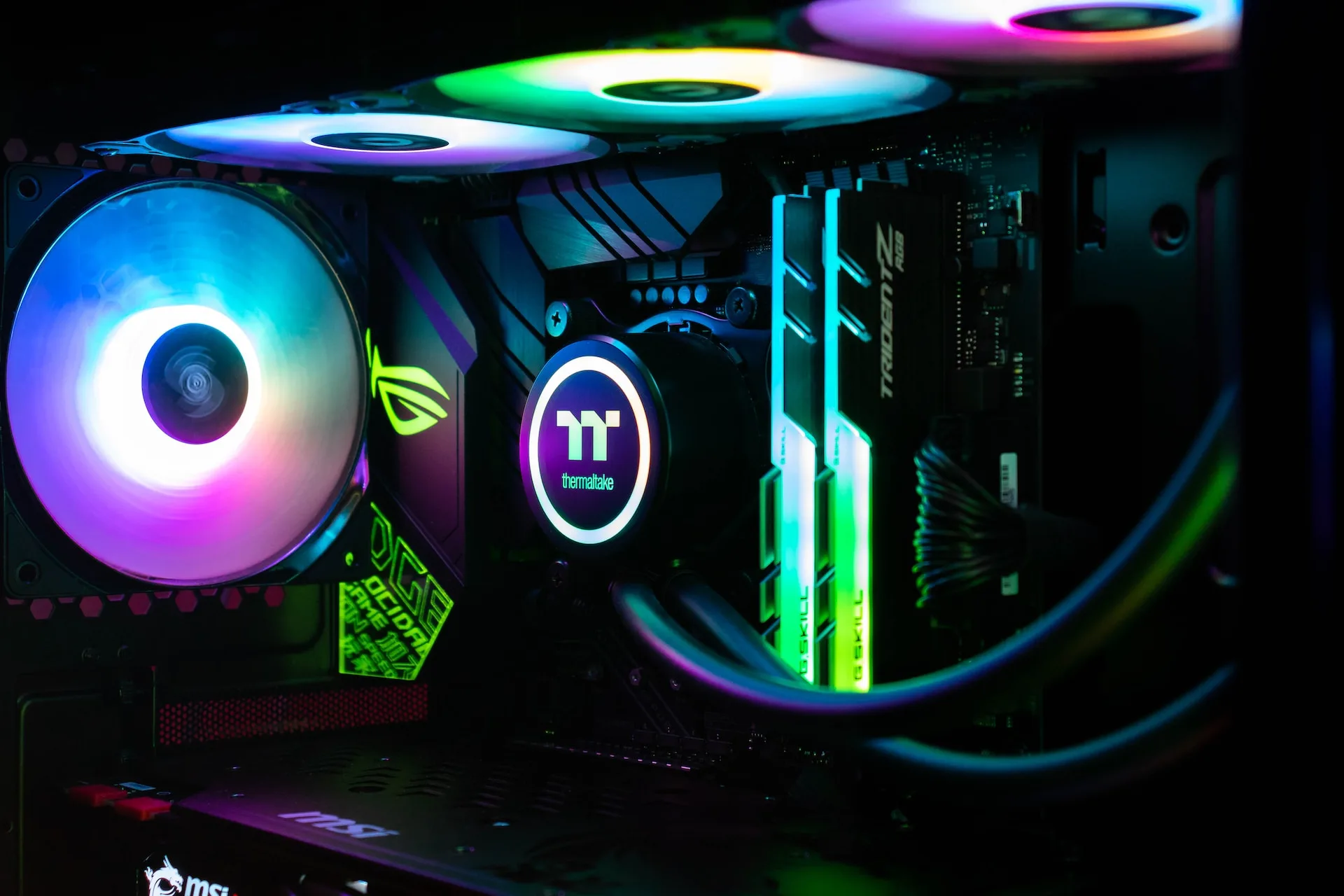
Leave a Reply